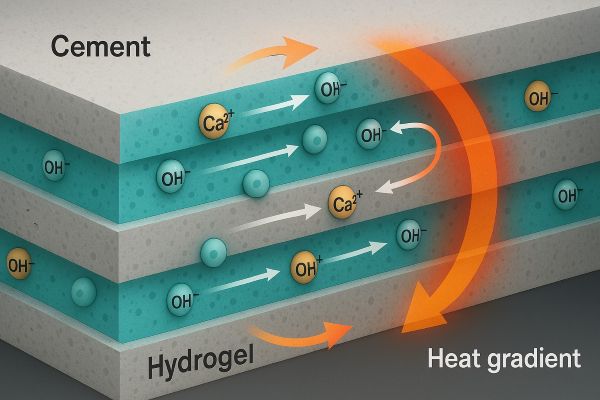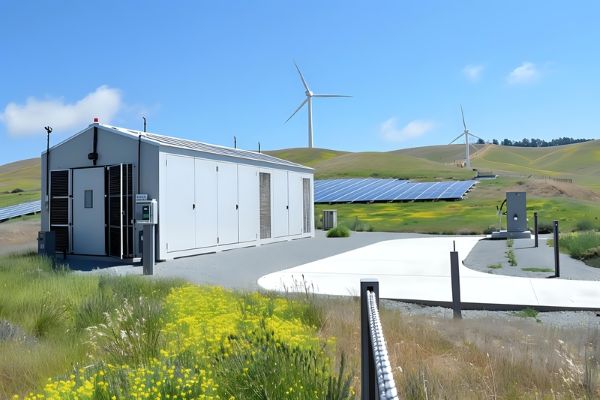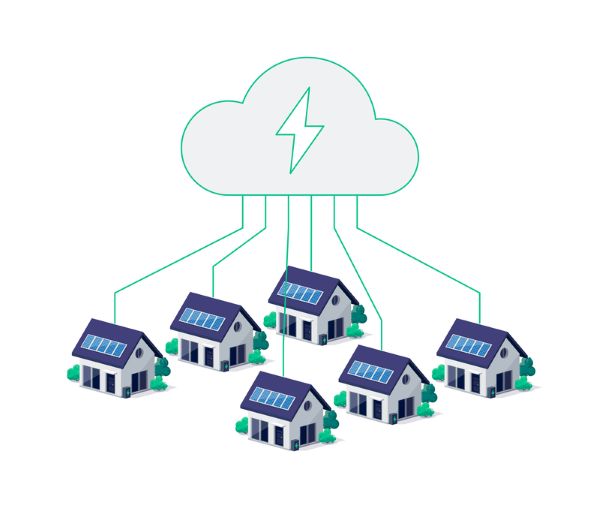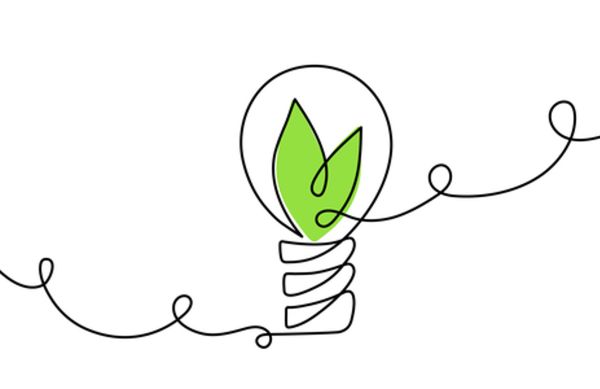These three energy stories grabbed my attention in the last few weeks, including:
- Invention of a cement composite that can store energy and generate electricity.
- Growth in mini and microgrids in the Global South to electrify homes for 380 million.
- Colorado utility launches first distributed energy virtual power plant.
Cement-Hydrogel Invented As Infrastructure Building Material

A team at Southeast University in China has created a new type of cement. The cement composite harnesses thermal energy, which can be converted into electricity. Its thermoelectric characteristics are unique. If perfected, this represents a groundbreaking advancement over Portland cement, the material most used in today’s construction.
The cement-hydrogel mix combines hydroxide and calcium ions plus water to facilitate ionic conduction (see image above). The temperature gradient within the material converts thermal energy into electricity.
Professor Zhou Yang heads up the team that developed the new material combining traditional cement with a polyvinyl alcohol (PVA) hydrogel. It can store electricity while at the same time be used as a building material, contributing to both structural and energy needs for smart infrastructure, and new urban and architectural designs.
A paper describing the material appeared in the March 28, 2025, edition of the journal Nature Communications.
Mini and Microgrids: A Global South Go-To Technology

In Africa, national governments working with the World Bank are financing mini and microgrids to supply smaller towns and isolated communities to deliver electricity to 380 million people by 2030. This represents as big a transformative shift in technological adoption as the smartphone for these countries.
Why do I make this claim? Cellular telecommunications networks replaced the need for stringing wires across Global South countries. Instead, cell towers replaced them. Now, mini and microgrids are eliminating the need to build fully integrated national and transnational energy grids with dedicated transmission corridors at a significant expense in implementation and maintenance.
The modern electrical age began with microgrids. Edison’s first DC power-generating systems delivered local electricity to companies before Tesla’s AC predominated as the global electricity delivery standard. Today, most of our electricity is generated by large power plants and is delivered over long distances through power lines. Now, with renewable solar, geothermal and wind combined with battery storage, the micro and minigrid market is starting to boom.
Annual minigrid investment grew sixfold between 2015 and 2022. Annual microgrid capacity, which was 3 Gigawatts in 2018, is expected to grow to 16 Gigawatts by 2027.
Advantages of these alternatives to a national or transnational grid infrastructure include:
- Meeting local energy needs and delivery reliability.
- Affordability per Kilowatt and Megawatt from energy generated by renewable local sources.
- Portability in terms of mini and microgrid setup, maintenance and performance.
Decentralization represents the beginning of a broad energy transition where decentralization will replace or complement the current grid infrastructure.
Colorado Launches A Virtual Distributed Energy Power Plant

A 50 Megawatt virtual power plant (VPP) is in the works for the state of Colorado, a collaboration involving the Colorado utility, Xcel Energy, along with Itron and Tesla, using the latter’s Powerwall battery storage technology. Colorado receives more than 300 sunny days annually and Colorado homeowners are installing rooftop solar panels and installed Powerwalls for battery backup to take advantage of this renewable energy source.
The VPP that Xcel is operating draws excess electricity from homeowners during peak state demand periods rather than relying on coal and natural gas peaker plants to stabilize the grid. Homeowner participants receive between $500 and $800 per Kilowatt of stored electricity plus annual bonuses for participating in the VPP.
In a March 20, 2025 press release, Itron, a developer of intelligent infrastructure services for utiltities and cities, described the project and its deployment of IntelliFLEX, a distributed energy resource management (DERM) software solution that will manage the VPP. The DERM platform is the VPP, a first of its kind delivering renewable solar and battery stored energy to customers state wide.
Itron’s Don Reeves, a Senior Vice President, describes the VPP as a near real-time energy delivery solution performing at the grid edge, and a way forward for future grid management during the low-carbon energy transition to a net-zero emissions future. The VPP represents a blueprint for other utilities to adopt customer-centred distributed energy solutions.
Research shows that deploying VPPs can reduce electricity costs annually by 20% and emissions by 70%. Household savings in Colorado will be about $140 per year, even for householders not participating in the program.









